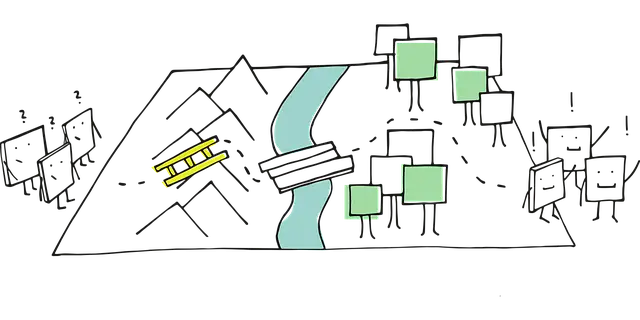Why are you building? What are you building? These two questions form the basis of any good product roadmap. Learn how to create the best product roadmap.
Learning how to build a product roadmap is a key requirement to break into product management.
Learn how to become a Product Manager.

The ability to prepare a great roadmap is one of the must have skills for any Product Manager.
Creating a roadmap is not a difficult task.
There are some guidelines that need to be kept in mind. We will cover these guidelines below.
The roadmap should not be a complicated document. It does not need to be very verbose.
It should be straight forward and easy to understand.
What Is Product Roadmap?
The product roadmap is the foundational guiding document that defines the vision for the product.
It is a product strategy document that is used as a source of truth by the product team, the development team, external stakeholders, etc.
The product team may choose to create separate roadmaps for different audience groups.
For example, a roadmap for external stakeholders focuses more on marketing a particular feature. The goal is to keep the customer hooked.
But, an internal roadmap for developers obviously needs to be detail oriented.
The internal roadmap should contain a detailed breakdown of the feature list. In addition to answering what we are building, the roadmap must also answer why we are building it.
It is important to find the right balance between too many details and too little details.
The roadmap should not be a simple to do list.
At the same time, it should not be a thesis document.
The roadmap should be clear, concise and crisp.
Roadmap Guidelines
There are a few things to keep in mind when building the product roadmap.
- Development team capacity is an important factor to consider. The roadmap is spread out across sprints. It is important to set a realistic target of what can be achieved within a particular sprint. The product team can work with the scrum team to better plan this. It is also important for the development team to have a product mindset.
- QA team capacity to test the features being built. There is no point having a huge list of developed features that are in the testing queue. The product team needs to keep the development backlog in sync with the testing backlog.
- Product life cycle is a very important factor. A product team needs to be plan each stage of the product meticulously. Accordingly, the right feature set needs to be put on the roadmap. Remember, adding a new feature at the end of the product’s life cycle can only add marginal value. New features cannot dramatically extend a product’s life cycle. It is generally better to introduce a new version of the product towards the end of a product’s life cycle.
- Value proposition vs. effort required is generally a standard practice across companies and product teams. The feature that gives the maximum customer value proposition while requiring the least amount of effort, is planned first. Finding the optimum balance between value proposition and effort required requires a fair bit of market research.
- Constant feedback loop is important to maintain a healthy roadmap. Don’t fall into the waterfall trap. Feature requirements will always change. Have regular reviews of the roadmap to account for important changes. Have an agile mindset when working on the roadmap.
When working on the above guidelines, don’t forget the KISS principle.

Product Roadmap Examples
Different product team approach their roadmaps differently.
There is no one standard approach when it comes to product roadmapping.
There are pros and cons to each of the below examples. The individual approach depends on the individual product team’s capacities and team dynamics.
A more traditional large company may spend more time building roadmaps.
A smaller startup with not enough planning capacity may just rush through their roadmap.
Honestly, a more well defined roadmap is required if you have larger, distributed teams that need to be kept on the same page.
Here are a few common techniques that people use to plan their roadmaps.
- Feature heavy roadmaps are built when there is a high level of clarity on the vision for the product.
- Feature light or goal-oriented roadmaps define the high level objectives for a product. This type of product roadmap sets out broad ideas for what a product needs to achieve in the coming time.
- Time sensitive roadmaps may not contain a lot of features or a lot of high level objectives. These roadmaps are generally built to meet a time sensitive goal that is generally critical to business operations. What features need to be built are not clearly defined for this type of roadmap. Only the timelines are clear and the end goal is known. What needs to be done to achieve that goal is figure out along the way.
No matter the style, the product team needs to display genuine leadership qualities while building and guiding the feature set for the roadmap.
Product Roadmap Tools
There are a wide variety of tools available that are dedicated to this purpose.
These tools also provide you with necessary product roadmap templates.
Jira is an all time favorite when it comes to product roadmaps.
Many teams also simply use Excel to create their templates.
However, the issue with Excel is that it cannot give the audience a more visual feel for the roadmap.
Visually depicting the information is better than depicting that same information via text. Visual representation is a key benefit of Kanban boards.
Here is the full list of top product management tools.
Aha is a great tool that is dedicated to the craft of creating product roadmaps.
There are many product management courses out there that do not focus enough on the importance of the product roadmap.
Here is a list of the top 9 product online courses, along with some of their pros and cons.
Do subscribe to my newsletter for the latest on product management.



